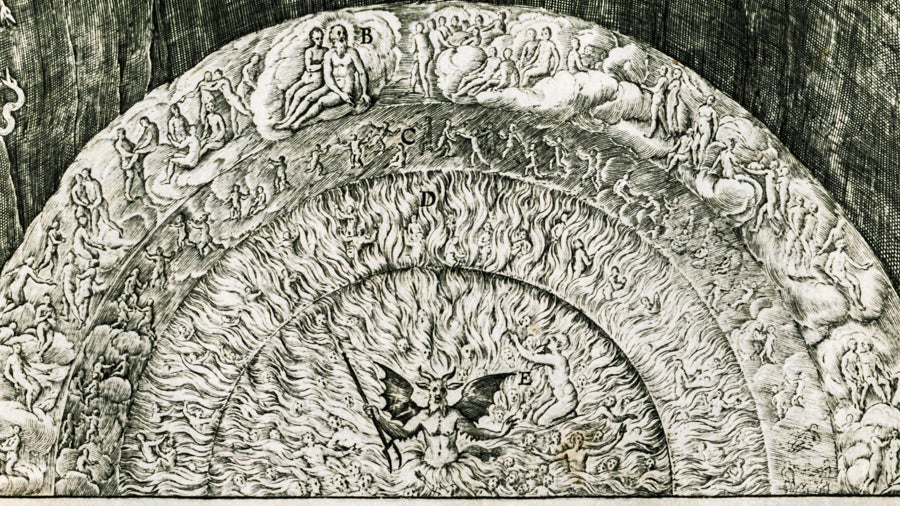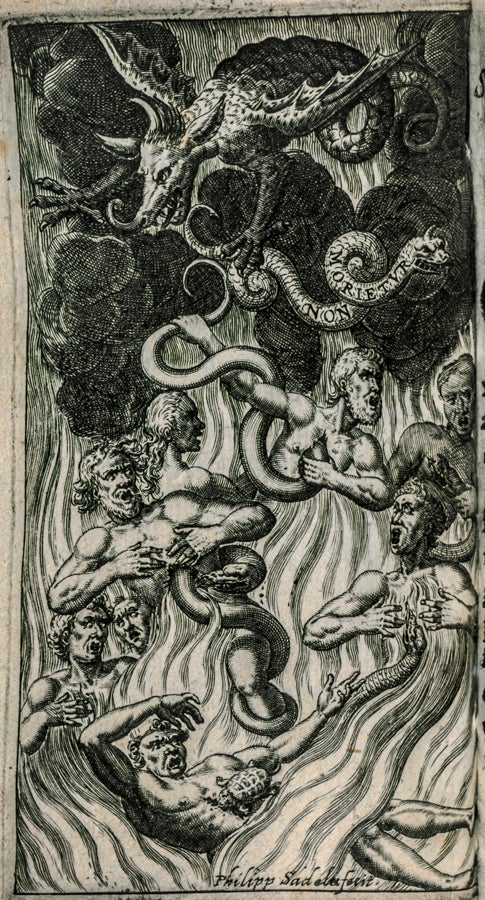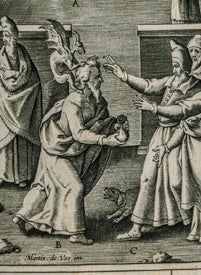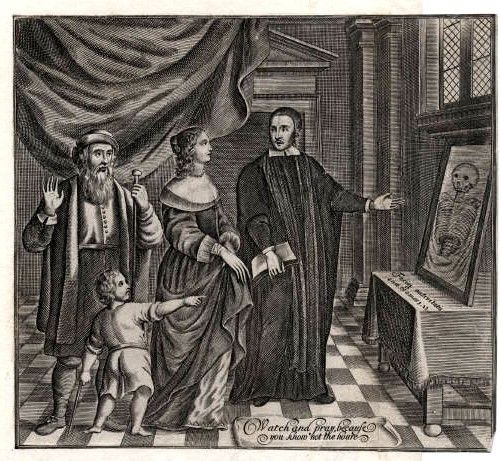The Halloween season is almost upon us, and to help you get in the mood, on October 1st Woodstock Library will debut an exhibition titled, Demons, Death, and the Damned: The Underworld of Woodstock Library. This exhibition is a chance to explore the spooky, devilish, and more lurid aspects of the collection, which some might mistakenly believe is all prayer books, biblical tomes, and catechisms. As the title suggests, the exhibition will highlight works and images related to the doctrine of hell, demons, and death.
In the 16th and 17th centuries, one of the ways church leaders attempted to ward believers from a sinful path was to write of the horrific torments awaiting the unrepentant. Mixing biblical, pagan, and post-canonical sources, these books would paint terrifying images of the afterlife, filled with flames, snakes, and demonic torture. One example within our collection is Infernus damnatorum carcer et rogus aeternitatis, by Jeremias Drexel, a former Lutheran turned Jesuit priest. A popular preacher of his day, Drexel’s prominence was in part due to devotionals such as the Infernus, which combined imaginative and vivid etchings of hell with extended meditations on every horrific detail, all in a pocketable size.
A common feature of these devotional hellscapes was the presence of demons. Not just confined to the underworld, the demonic realm was also widely believed to influence day-to-day events and one’s personal fate, making up a whole genre of literature. Woodstock owns a number of these demonologies and exorcism manuals, which both describe the demonic and delineate methods of discernment and resistance. One such manual is the Thesavrvs exorcismorvm by Valerio Polidoro, a copy of which can be seen in the exhibit.
The idea of death also played a role within 16th and 17th century literature, not only as a figure to be feared, but as a positive object for spiritual and moral contemplation. The contemplation of death as a path of moral cultivation is known as Memento Mori, and a number of pieces within our exhibition trade on this theme. One example is the 17th century devotional by Jeremy Taylor, The Rule and Exercises of Holy Dying. The mirror of death is a common trope in this literature, deployed here by Taylor, as a symbolic confrontation of the viewer with their own mortality.
If you’re interested in seeing more material like this, the Booth Family Center for Special Collections is also featuring an exhibit titled Macabre, which is currently on display in the special collections gallery.
Post by Adrian Vaagenes, Digital and Archival Services Librarian




